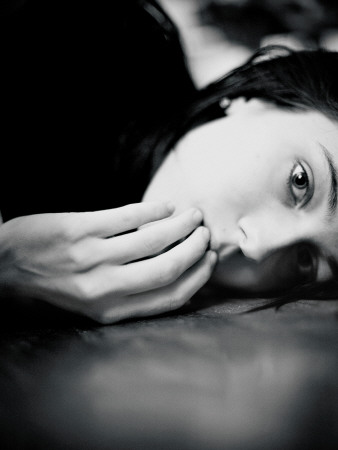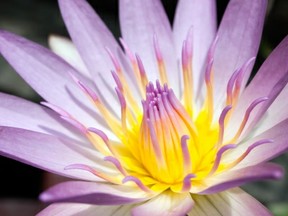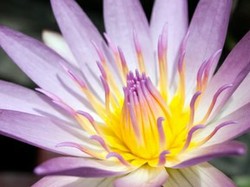As the name implies, Bhramari (BRAM-a-ree) pranayama sounds like the buzzing of a large bee.
Similar to the Ujjayi-like breath in the previous section, the emphasis is on the exhalations, but here the exhalations are done with an audible "buzzing" or humming sound.
In my experience, this is a very effective breathing technique that calms me very quickly. The Ujjayi breath works well, but Bhramari works even better for me.
Paraphrased from the video below, "The practice of Bhramari calms the mind and reduces stress and anxiety. It alleviates insomnia, and lowers high blood pressure. It has a calming effect on the entire nervous system. "
To practice Bhramari breathing, start as instructed in the Ujjayi breath section, above. Sit well, with a good posture, or perhaps lie down with a blanket or two under the chest and head to naturally create more space in the lungs. Remember to relax the diaphragm area so the diaphragm isn't tensed! This is very important!
After a few normal relaxed breaths, during an exhalation, start a humming or buzzing sound. Let it be slow and steady, at a comfortably low-pitched sound (like a large bee!). This humming breath will help you to lengthen your exhalations, which in turn will help your body relax and your mind become calm. You might repeat this 2 - 4 times to start, and increase to 10 times after you're more experienced. Always stop and go back to a regular relaxed breath if you start to feel breathless or tense. It means you've overdone the breath, and need to back off for a bit.
As I also mentioned above with the Ujjayi-type breath, I've done Bhramari-like breathing when I've been out walking or driving, or just around the house. It works very quickly for me!







 I have a tendency toward anxiety and worry during stressful times in my life, and if I don't get the anxiety under control, I'm not of much help to anyone.
I have a tendency toward anxiety and worry during stressful times in my life, and if I don't get the anxiety under control, I'm not of much help to anyone.

 Singer-Songwriter Ellis Performs From the Hearton 06/03/2013
Singer-Songwriter Ellis Performs From the Hearton 06/03/2013
 The Light-Weight SteriPen Water Purifier for Camping or Travelon 01/18/2015
The Light-Weight SteriPen Water Purifier for Camping or Travelon 01/18/2015
 Inexpensive Gift Ideas For Coffee Loverson 11/28/2014
Inexpensive Gift Ideas For Coffee Loverson 11/28/2014
 Very Simple Cranberry Sauceon 11/26/2014
Very Simple Cranberry Sauceon 11/26/2014



Comments
Very informative and love the images.